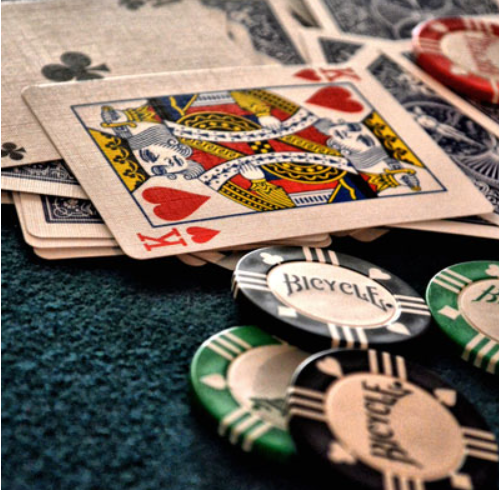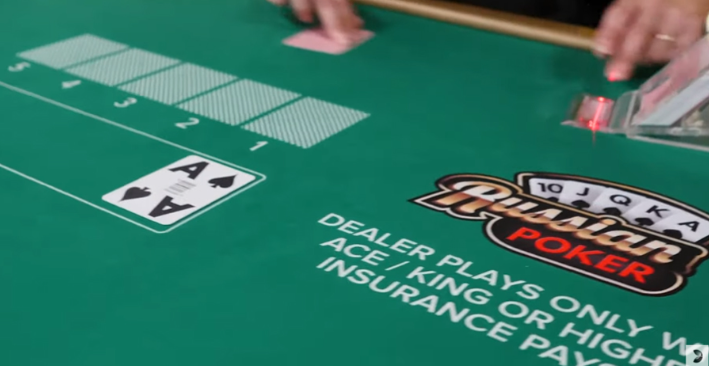Now let’s learn about bluffing. This is the one thing that non-poker players often assume they understand.
Bluffing is simply the act of cheating to make your weak hand appear stronger than it really is so that you can fold your opponent.
To be able to excel at bluffing in poker, you need to understand the perspective of other players so you can build an effective game plan.
You need knowledge and perception of certain variables that are very important.
These include the styles of poker participants at the table, the number of opponents on the table, your ability to read your opponents’ play, post-flop cards, the impression you have already made at the table, the size of the pot, and even your hand position.
The list consists of various bluffing tips to provide you with clues when you are bluffing.
Hand reading skills

To determine whether a bluff is working or not, it is necessary to calculate the strength of the opponents’ hands. Hand reading skills can be built and practiced over time. First, evaluate your opponent’s preflop patterns.
This is by analyzing their opening, checks, betting information, trends and more. Then you can use this to show the range of starting hands you think your opponent might have in their position.
The better this range is, the better you can beat their game and decide whether you want to bluff or play against them.
With such higher skills and thought processes, you will also begin to think about what your opponent thinks you have and vice versa, which can eventually result in playing at a higher level.
Frequent theft of blinds
The best way to continue bluffing is to steal blinds more often. Some say that having a strong hand is enough to steal blinds.
In reality, there is no such need. You simply need to have both strong and weak blind players.
If the button folds to you, you have a hand like 8♥5♥ or K♠4♠, but then you see two solid players who don’t hit the small and big blinds too hard, raise rather than fold!
Often this basic poker bluff will make you win an easy pot quickly. Don’t even underestimate this long-term value to your poker earnings.
The difference between a small winning poker player and a big winning poker player is to get the 1.5 big blind from a positive blind steal a little more often.
Small bluffs count
Don’t succumb to the illusion that bluffing has to be a phenomenal, multi-stage contest. Even a cbet of less than 1⁄2 the size of the pot can also be a good bluff. Smaller 3bets can be used to cbet in your 3bet pots when you are in preflop position. Although bigger bets usually increase your fold equity, not all circumstances call for a big bluff.
Placing small bets as bluffs on earlier streets, will help you get details and much more fold equity on later streets, by placing a bigger bet at these moments.
Bluff a maximum of 2 players
If you want to excel at bluffing in poker, you must always bluff to only two players at a time.
With many active players at the table, you are unable to scare off more than 2 players.
Acting against this rule allows the player who remains uninvolved to check your bluff, in case your opponent has a strong hand.
In most situations, pots with more than two players are not favorable for bluffing, because the higher your bet, the less likely a player will check.
3-bet light
Another simple tip for bluffing in poker is to re-raise before the flop with any hand that is not nuts. This has also been recognized as 3-bet light.
You should do this against strong, but not always fighting players.
So when they raise in late position, it’s the perfect time. In other words, if they raise through the button or in a blind vs blind incident.
They are often weak here. Try raising them lightly once in a while with speculative hands.
You can 3-bet with hands like A♦5♦ and 8♣9♣.
4-bet light
If you think someone is doing you a re-raising light before the actual flop, you can now take it to the next level. This can be accomplished by re-raising. This is often referred to as a 4-bet.
These small suited aces are ideal for using 4-bet light: A♥3♥ and A♠4♠.
The explanation for this is that they are relatively equal to the big pair. For example, A3 is about 30 percent beats pocket queens.
Nevertheless, these hands can also flush nut and straight the wheel.
Small suited aces have a fairly large card removal. This means that when you have this ace in your hand, it reduces the likelihood that your opponent has a big ace to himself.
That’s why a light 4-bet preflop is an easy poker bluff every now and then, pulling it against weak, scared opponents.
A sign of weakness
You can easily take advantage of your opponents by putting pressure on them through bluffing if you think they have weak hands.
Physical cues, betting tips or other verbal cues can represent signs of weakness.
Don’t carelessly attack weaknesses

If your opponents test the flop or turn and show weakness, this doesn’t necessarily give you an excuse to attack in the next street/levels with only two cards, as you will overbluff and potentially lose money in the long run.
This is a habit of some poker players, especially if they are usually looking with weaker holdings. Try to counter this act, but that doesn’t mean you can bet with all your hands 100 percent of the time.
Balance your ranges and bets
It is necessary to balance your ranges and bets so that your opponents are constantly guessing at your hand. Ultimately, this means that you shouldn’t always play your value hands the same way, or bluff the same way all the time.
This makes you a much more trustworthy opponent because you are much less predictable.
Make them think you are weak!
Then again, the best trick for poker bluffers is to make them believe that you are a weak and scared poker player. And maybe make them believe that if you only have balls, you are just some fool who just bets high and raises.
And no one will trust your bluff if everyone sees you as a loose psychopath. They will just call you nuts.
Leave a Reply
You must be logged in to post a comment.